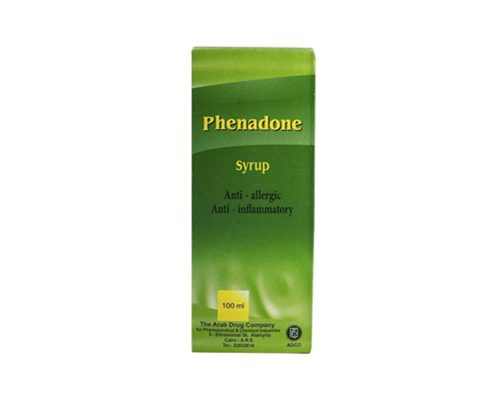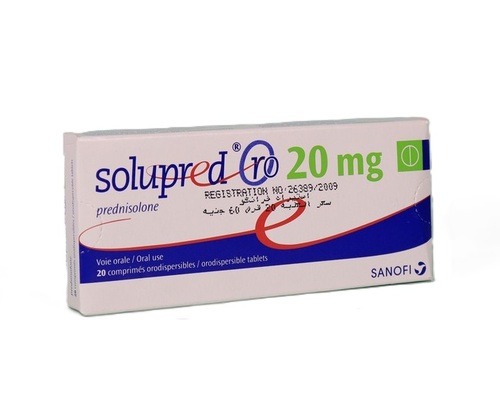Description
Trade name:
Phenadone
Compound:
Each 5 ml of syrup contains:
Dexamethasone 0.5 mg
Chlorpheniramine maleate 2 mg
Auxiliary components:
Methylparaben, propylparaben, glycerin, ethyl alcohol 95%, sugar.
Properties:
Dexamethasone is a synthetic adrenal cortex hormone (corticosteroid) with glucocorticoid activity. It has anti-inflammatory and immunosuppressive effects and influences energy metabolism, glucose homeostasis, and (via negative feedback) the secretion of hypothalamic releasing hormone and pituitary trophic hormone.
Chlorpheniramine maleate is an H1-histamine receptor blocker. It constricts nasal blood vessels, eliminates swelling and hyperemia of the mucous membrane of the nasal cavity, nasopharynx and paranasal sinuses; reduces exudative manifestations, suppresses symptoms of allergic rhinitis.
Indications:
It is indicated for a large number of diseases that respond to glucocorticoid therapy, as well as an adjuvant for cerebral edema.
– Insect bites.
– Food allergies.
– Itchy rashes.
– Relieves itching, redness, swelling and irritation.
-Itchy rash from chickenpox.
Method of administration and dosage:
Adults:
1 teaspoon per day.
Children :
0.01-0.1 mg/kg once a day.
Contraindications:
Hypersensitivity to the active substance or other ingredients of the drug.
Acute viral, bacterial and systemic fungal infections (without appropriate treatment).
Cushing’s syndrome.
Vaccination using a live vaccine.
Pregnancy.
Breastfeeding period (except in emergency cases).
Precautions:
In patients undergoing long-term treatment with dexamethasone, a corticosteroid withdrawal syndrome may occur (also without noticeable signs of adrenal insufficiency) after discontinuing therapy (fever, nasal discharge, conjunctival redness, headache, dizziness, drowsiness or irritability, muscle and joint pain, vomiting, weight loss, weakness, and frequent seizures). Therefore, the dose of dexamethasone should be gradually reduced.
Side effects:
– decreased glucose tolerance, “steroid” diabetes mellitus or manifestation of latent diabetes mellitus.
– Itsenko-Cushing syndrome, weight gain.
– hiccups, nausea, vomiting, increased or decreased appetite, flatulence, increased activity of liver transaminases and alkaline phosphatase, pancreatitis.
“-steroid” ulcer of the stomach and duodenum, erosive esophagitis, bleeding and perforation of the gastrointestinal tract.
-arrhythmia, bradycardia (up to cardiac arrest), development (in predisposed patients) or increased severity of chronic heart failure, increased blood pressure.
-hypercoagulation, thrombosis.
-delirium, disorientation, euphoria, hallucinations, manic-depressive psychosis, depression, paranoia.
-increased intracranial pressure, nervousness, anxiety, insomnia, headache, dizziness, convulsions, vertigo.
– pseudotumor of the cerebellum.
– sudden loss of vision (with parenteral administration, deposition of drug crystals in the vessels of the eye is possible), posterior subcapsular cataract, increased intraocular pressure with possible damage to the optic nerve, trophic changes in the cornea, exophthalmos, development of secondary bacterial, fungal or viral eye infections.
– negative nitrogen balance (increased protein breakdown), hyperlipoproteinemia.
– increased sweating.
– fluid and sodium retention (peripheral edema), hypokalemic syndrome (hypokalemia, arrhythmia, myalgia or muscle spasm, unusual weakness and fatigue).
– slowing of growth and ossification processes in children (premature closure of epiphyseal growth zones).
– increased calcium excretion, osteoporosis, pathological bone fractures, aseptic necrosis of the humeral and femoral heads, tendon rupture.
“-steroid” myopathy, muscle atrophy.
– slow wound healing, tendency to develop pyoderma and candidiasis.
-petechiae, ecchymosis, thinning of the skin, hyper- or hypopigmentation, steroid acne, striae.
-generalized and local allergic reactions.
– decreased immunity, development or exacerbation of infections.
-leukocyturia.
– violation of the secretion of sex hormones (menstrual cycle disorders, hirsutism, impotence, delayed sexual development in children).
-withdrawal syndrome
Storage method:
Store at temperatures not exceeding 30 degrees.
Package:
The cardboard box contains a 100 ml bottle and paper instructions.









